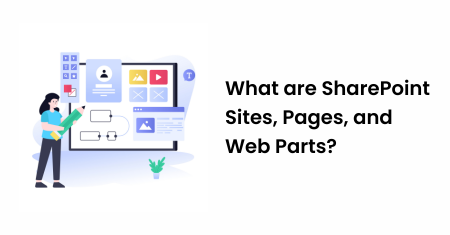

On my latest journey to Australia, I met with a handful of startups which might be fixing laborious issues in healthcare, like mapping the mind, predicting seizures, and enhancing rehabilitation for aged sufferers. And in all of those circumstances, cloud applied sciences are serving to to speed up analysis and innovation.
After half a dozen journeys unfold throughout 20 years, huge is the primary phrase that involves thoughts after I consider Australia. From the Nice Barrier Reef to the Blue Mountains, all the best way to Kakadu Nationwide Park, it’s an immensely biodiverse place. House to greater than 1 million plant and animal species, many distinctive. Nevertheless, it’s a rustic that’s outlined as a lot by distance and the areas between, as it’s by pure magnificence. At almost the dimensions of the continental United States, Australia has lower than 1/tenth the inhabitants — however the inhabitants it does have is among the most numerous on this planet, together with a wealthy mix of indigenous and immigrant cultures. It’s a rustic of great contrasts. And for that cause, it ought to come as no shock that the companies and concepts born in Australia are as numerous because the people who inhabit it.
For a number of weeks in January and February, I had an opportunity to go to the east coast of Australia, which coincided with our first AWS Area launch of the New 12 months. After a fast go to to Rod Laver Enviornment, the place I witnessed an unimaginable displaying from Novak Djokovic towards Stefanos Tsitsipas, I spent most of my time assembly with AWS prospects and Amazonians which might be inventing Australia into the longer term. From centuries-old banks and enormous telco enterprises, to younger startups doing all the things from good farming to piloting subterranean robots that map water techniques beneath the town streets of Melbourne, the cloud helps corporations of all sizes innovate shortly and at scale.
All of it begins with the mind
Australia is house to a flourishing startup scene. It’s flush with corporations centered on enhancing healthcare outcomes, not just for individuals in Australia, however in all places on this planet. And all of it begins with the mind.
Earlier this 12 months, once we launched the AWS Asia Pacific (Melbourne) Area, I wrote about Omniscient Neurotechnology (o8t). A company that has built brain mapping software with the potential to revolutionize not only neurosurgery, but the way that we diagnose and treat both neurological and mental health conditions. When I got to Sydney, they were kind enough to sit and chat about their technology stack, and how cloud services, specifically machine learning, allow them to produce personalized brain maps from existing MRIs that not only show how a patient’s brain is shaped, but how each and every connection is clustered. And while I declined a personal brain scan (I’m not quite ready to know everything that’s going on inside my head), I left our conversation feeling hopeful. I remember the days when MRIs were filed in cabinets, and analyzing hundreds of thousands of data points was a pipe dream. This technology truly has the potential to improve our collective understanding of the brain, accelerate research, and most importantly, improve the lives of patients. I first learned of Omniscient from Billion Dollar Napkin, and I’m together with a hyperlink to the episode as a result of it’s completely value watching.
It’s thrilling to see how new applied sciences are getting used to reinforce the experience of medical doctors, researchers, and medical professionals. We will all agree that extra precision in neurosurgery is an effective factor. Nevertheless, an space that’s typically ignored, however equally necessary, is growing the instruments that present sufferers with extra management of their remedies.
Seer Medical is a startup centered on enhancing the lives of individuals residing with epilepsy. They’ve created a non-invasive wearable gadget that can be utilized at house to constantly acquire EEG and ECG knowledge from a affected person. The info is saved within the cloud (a whole lot of TBs), then analyzed to detect coronary heart and brainwave abnormalities, that are used to foretell seizures earlier than they happen. Entry to this kind of info was traditionally restricted to multi-day research that relied on costly gear and required sufferers to remain at a clinic in a single day for statement. When the examine concluded, so did knowledge assortment. What Seer has developed is a recreation changer for sufferers, in addition to medical doctors and researchers. It provides sufferers autonomy. In the event that they know that some days are greater danger than others they will plan for it and decrease dangers. For medical doctors and researchers it means extra and higher knowledge to review, which can sooner or later assist them forestall epileptic seizures altogether.
In each circumstances, cloud applied sciences paired with human intelligence are shifting us nearer to a future the place personalised healthcare is the usual, not the exception.
Organic intelligence
Not everyone studying the brain is focused on healthcare. Melbourne’s Cortical Labs are developing what they call “DishBrain Intelligence”. At the intersection of soft tissue and silicon, they are using stem cells to create the equivalent of a neural network that lives on a lab slide (the “DishBrain”).

So far, they have taught stem cells to play Pong. Just like the neural networks utilized in machine studying, these biologic computer systems depend on reinforcement studying. When an motion is carried out, the community is both rewarded or penalized primarily based on the consequence.
At a high-level, right here’s the way it works. The slide makes use of electrical inputs to see the paddle and ball, and electrical outputs to maneuver the paddle. When the ball makes contact with the paddle, the community is rewarded with a small quantity of centered vitality. When the paddle misses the ball, the community is given a small quantity of random noise. Over time, the stem cells study to optimize the community to hit the ball. The irony just isn’t misplaced on me that we’ve spent a long time designing techniques that mimic the human mind, and now we’re seeing neural stem cells utilized in natural computer systems. Joking apart, the research being done by Cortical Labs is intriguing, and reveals that there’s nonetheless rather a lot that we’ve to study. Within the close to future, they are going to be wanting into the impacts of drugs and alcohol on their organic computer systems — it will likely be attention-grabbing to see what they uncover.
Wholesome physique, wholesome thoughts… and a little bit of aggressive benefit
Shifting from the lab to the realm of on a regular basis actions, there are Australian startups doing attention-grabbing work on the crossroads of well being and sport. Corporations like VueMotion, who’re utilizing laptop imaginative and prescient to develop machine studying fashions that may monitor kinetic and kinematic knowledge for athletes — all the things from joint angles and gait evaluation, to the affect power of a foot strike or a tough minimize on the soccer pitch.
Much like how Omniscient are constructing personalised mind maps, VueMotion are creating personalised physique fashions. They confirmed me a demo of a runner whose stride lengths diverse from left to proper foot with an overlay of kinematic knowledge. With this kind of info, trainers and coaches can shortly achieve an understanding of how somebody strikes in a pure atmosphere, make changes, then monitor how their actions change over time — each progressions and regressions — all utilizing video captured from a smartphone.
What VueMotion has constructed has actual potential to stop accidents and enhance efficiency for athletes in any respect ranges. It’s the kind of innovation I alluded to in this year’s predictions. But the implications are much bigger than sport. VueMotion believes that their technology can also improve elder care and rehabilitation. Giving doctors and physical therapists the tools and data they need to draw insights, create patient specific plans, and track progress over time. It’s yet another example of technology augmenting expertise in healthcare.
Last, but certainly not least, are Bolt6. I met with them at the Australian Open, where they were running a proof of concept for player, racket, and ball tracking — processed and analyzed in the cloud (no server racks required). I first noticed how prevalent technology had become in tennis watching the US Open last summer. All the line judges have been gone. Only a chair umpire and the ball crew. A product of the pandemic, however seemingly an indication of issues to return. This realization left me with extra questions than solutions. How correct have been the road calls? Would this variation the notion of equity for gamers and followers? Would it not velocity up matches, and if sure, how would it not affect participant fatigue and incidence of damage?
The know-how Bolt6 has developed to make line calls may be very correct. With an error tolerance of three millimeters, it gives extra precision than the common line decide. And it’s constant — a digicam isn’t going to vary a name when a participant yells or smashes a racket.
With X, Y, Z monitoring, Bolt6 can do far more than make a line name or measure gait, they will do issues like decide how shut a participant is to a ball and the way they’re shaping as much as make successful, even assess fatigue in real-time. And their innovation doesn’t cease with tennis. Bolt6 can be offering the know-how that permits NASCAR to trace every automotive on a monitor with 300 millisecond supply, no matter the place on this planet a race is happening. What they’ve constructed opens up a close to infinite variety of analytics that may enhance coaching and technique for all sports activities, and improve broadcasts for followers.
As I mentioned on the finish of final 12 months, the sports activities world is at present on the verge of the largest revolution it has ever seen, and cloud applied sciences are on the middle of this variation.
It takes a village
I’m repeatedly requested questions on how issues work at Amazon. How we do issues. What drives innovation. Every thing from writing docs to successfully managing giant engineering groups constructing distributed techniques. I can share processes, I can talk about tradition, however what makes Amazon work is the Amazonians. With out them, what you’ve examine on this publish wouldn’t be doable.

Till subsequent time
As huge and numerous as Australia could be, there was a typical theme shared by the businesses, entrepreneurs, and engineers I met with: a ardour to resolve laborious human issues. As I mirror on this journey, it’s actually inspiring to see how cloud applied sciences are being harnessed to enhance healthcare outcomes. Now, as at all times, go construct!






